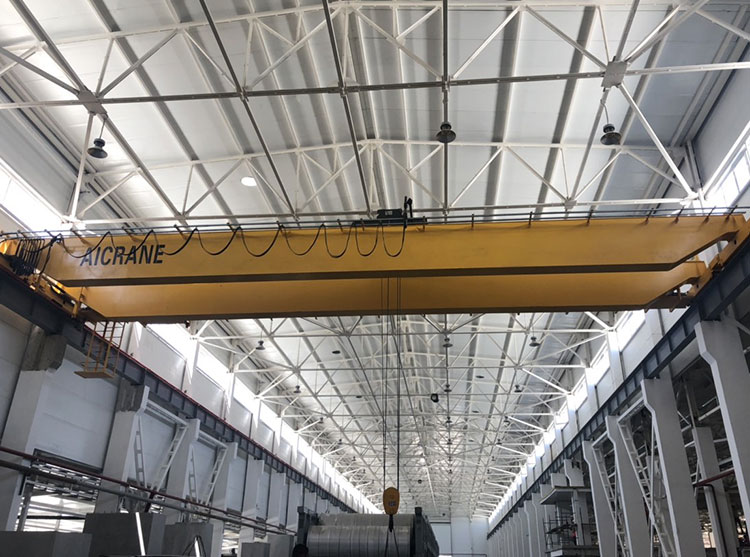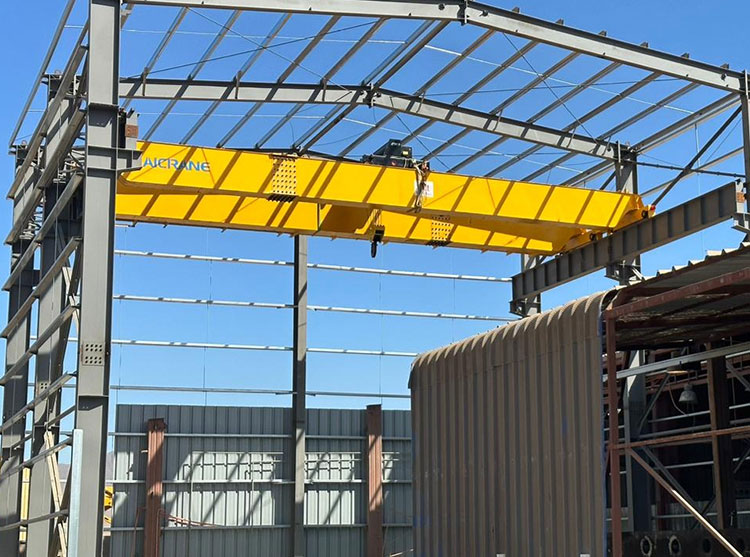Bridge cranes, particularly those with a 30-ton lifting capacity, are critical tools in heavy industrial operations, from steel manufacturing and shipbuilding to logistics and warehousing. While the basic principles of a bridge crane remain consistent – comprising a bridge, hoist, trolley, and supporting rails—the design and application of these cranes can vary significantly depending on regional factors. Geography, climate, local industry practices, regulatory standards, and economic conditions all influence how these cranes are engineered, installed, and utilized. Understanding these regional differences is essential for manufacturers, operators, and buyers who aim to optimize crane performance and longevity.

Climate and Environmental Conditions
One of the most obvious factors affecting crane design is the local climate. In regions with extreme temperatures, humidity, or precipitation, 30 ton bridge cranes must be adapted to withstand these conditions.
-
Cold climates, such as in Russia, Scandinavia, or Canada, demand cranes that can operate reliably in subzero temperatures. Materials are carefully selected to prevent brittleness in steel components. Lubricants and hydraulic fluids are chosen for low-temperature viscosity, and heating systems may be integrated into control cabins or motors to maintain functionality. Electrical systems are insulated and protected to prevent condensation-related faults. Additionally, cranes in snowy regions may require de-icing measures for rails and structural elements.
-
Hot climates, typical in Middle Eastern countries, require attention to heat-resistant materials and cooling mechanisms for motors and electrical systems. Steel expands in high temperatures, so bridge girder designs must account for thermal expansion to prevent structural stress. High ambient temperatures can also influence the selection of wire ropes, hoist brakes, and insulation for control electronics.
-
Coastal and humid environments – such as ports in Southeast Asia – pose challenges with corrosion due to salt-laden air. In these regions, cranes often feature galvanized or stainless steel components, specialized coatings, and corrosion-resistant paints. Regular maintenance schedules are critical to prevent rust and degradation, which can compromise safety and operational efficiency.
Industrial Application Differences
The primary industries in a region significantly affect the design priorities and configurations of 30-ton bridge cranes.
-
Steel and metal processing regions, such as parts of China, India, and Germany, favor heavy-duty double girder crane designs with long spans to handle large, dense steel slabs or coils. These cranes often feature robust hoists capable of continuous operation, advanced anti-sway systems for precise load handling, and automated positioning systems for efficiency in high-volume production lines.
-
Port and logistics regions, for instance in Singapore, Rotterdam, or Los Angeles, often prioritize cranes with fast, precise movement and multiple hoists for container handling and cargo operations. Here, the focus is less on extreme load endurance and more on speed, reliability, and automation, including integration with port management software and tracking systems.
-
Construction and heavy infrastructure regions, like the Middle East or parts of Africa, require flexible cranes that can handle varying load types and work in temporary or semi-permanent facilities. Portability, modular design, and easy installation become more critical than long-term continuous duty performance.
-
Automotive or machinery assembly regions, such as Japan or South Korea, use cranes emphasizing precision and controlled movement. These cranes often incorporate smart sensors, load monitoring, and smooth acceleration/deceleration mechanisms to protect delicate machinery or components during assembly.

Local Regulatory and Safety Standards
Crane design and operation are heavily influenced by local safety and regulatory standards, which differ from country to country.
-
In Europe, compliance with European Norms (EN) such as EN 15011 for bridge cranes is mandatory. These standards dictate load testing procedures, structural safety factors, control system safety, and operator training requirements. European designs may include advanced safety interlocks, anti-collision systems, and ergonomic operator cabins to meet strict occupational health and safety regulations.
-
In North America, cranes must comply with OSHA (Occupational Safety and Health Administration) and CMAA (Crane Manufacturers Association of America) standards. These standards emphasize structural integrity, operator safety, and periodic inspection schedules. American cranes often feature redundant safety systems and detailed documentation for inspection and certification purposes.
-
In Asia, standards can vary significantly. China, for example, adheres to GB (Guobiao) standards for overhead bridge cranes, which may differ from European or American norms. Local safety regulations influence the design of limit switches, overload protection, and emergency stop mechanisms, as well as operator training programs.
Compliance with regional regulations ensures not only safety but also insurance eligibility and legal operation. For international buyers, understanding these differences is critical when importing or exporting cranes.
Material Selection and Technological Preferences
The availability of materials and local manufacturing expertise also impacts crane design.
-
Regions with abundant high-quality steel production, such as Germany or China, may utilize high-strength steels for girders and supports, allowing for lighter yet robust designs. In contrast, regions with limited local steel quality may compensate with thicker structures, heavier designs, or additional reinforcements.
-
Technological adoption varies regionally. European and North American markets tend to favor fully automated or semi-automated cranes equipped with smart monitoring, IoT connectivity, and energy-saving drives. In contrast, some developing regions may still prioritize simpler, manually controlled or semi-electric cranes due to cost constraints or lower infrastructure readiness.
-
Energy efficiency and environmental considerations are increasingly important in regions with strict energy policies, such as the EU. Here, cranes may feature regenerative drives, low-loss motors, and optimized control algorithms to reduce electricity consumption and carbon footprint.
Operational Practices and Workforce Factors
Crane usage is also influenced by local workforce skills and operational practices.
-
Highly trained operators in industrialized regions can manage overhead traveling cranes with sophisticated control systems and automated features, allowing for higher productivity and precision.
-
In regions with less formal training, cranes may need simpler controls, visible manual override options, and intuitive safety systems to prevent accidents.
-
Maintenance practices vary; some regions have well-established preventive maintenance cultures, while others rely on reactive maintenance. This impacts design choices, such as modular components for easy replacement and durability-focused materials to withstand irregular servicing.
Economic and Supply Chain Considerations
Economic conditions directly affect crane design and usage strategies:
-
High-budget regions can afford custom 30-ton bridge cranes with advanced automation, integration with production systems, and long-term service contracts.
-
Cost-sensitive regions may prioritize modular, standard designs that are easier and cheaper to manufacture, install, and maintain. Components may be locally sourced to reduce import costs, impacting design tolerances and specifications.
-
Supply chain reliability also plays a role; regions with stable supply chains can plan for advanced, imported components, while areas with limited access may prefer locally manufactured or standardized parts for reliability.
Conclusion
Regional differences in 30-ton bridge crane design and usage are shaped by a combination of climate, industrial applications, regulatory standards, materials, technology adoption, workforce skills, and economic conditions. Manufacturers and buyers must carefully consider these factors to ensure that cranes operate safely, efficiently, and reliably over their intended lifespan. Understanding regional variations helps in making informed decisions regarding crane selection, design modifications, and operational strategies. Ultimately, recognizing these differences allows industries to optimize productivity, minimize downtime, and enhance safety across diverse operational environments.